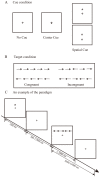Fiber pathways of attention subnetworks revealed with tract-based spatial statistics (TBSS) and probabilistic tractography
- PMID: 24223852
- PMCID: PMC3817088
- DOI: 10.1371/journal.pone.0078831
Fiber pathways of attention subnetworks revealed with tract-based spatial statistics (TBSS) and probabilistic tractography
Abstract
It has been widely accepted that attention can be divided into three subnetworks - alerting, orienting and executive control (EC), and the subnetworks of attention are linked to distinct brain regions. However, the association between specific white matter fibers and the subnetworks of attention is not clear enough. Using diffusion tensor imaging (DTI), the white matter connectivity related to the performance of attention was assessed by attention network test (ANT) in 85 healthy adolescents. Tract-based spatial statistics (TBSS) and probabilistic diffusion tractography analysis demonstrated that cerebellothalamic tract was involved in alerting, while orienting depended upon the superior longitudinal fasciculus (SLF). In addition, EC was under the control of anterior corona radiata (ACR). Our findings suggest that different fiber pathways are involved in the three distinct subnetworks of attention. The current study will yield more precise information about the structural substrates of attention function and may aid the efforts to understand the neurophysiology of several attention disorders.
Conflict of interest statement
Figures






References
-
- Thiel CM, Zilles K, Fink GR (2004) Cerebral correlates of alerting, orienting and reorienting of visuospatial attention: an event-related fMRI study. Neuroimage 21: 318–328. - PubMed
-
- Thimm M, Kircher T, Kellermann T, Markov V, Krach S, et al. (2011) Effects of a CACNA1C genotype on attention networks in healthy individuals. Psychol Med 41: 1551–1561. - PubMed
-
- Posner MI (2008) Measuring alertness. Ann N Y Acad Sci 1129: 193–199. - PubMed
-
- Corbetta M, Kincade JM, Ollinger JM, McAvoy MP, Shulman GL (2000) Voluntary orienting is dissociated from target detection in human posterior parietal cortex. Nat Neurosci 3: 292–297. - PubMed
Publication types
MeSH terms
LinkOut - more resources
Full Text Sources
Other Literature Sources

